Build full-body strength and banish muscular imbalances with this five-move dumbbell workout
Build muscle, boost your metabolism and improve your coordination with this accessible session

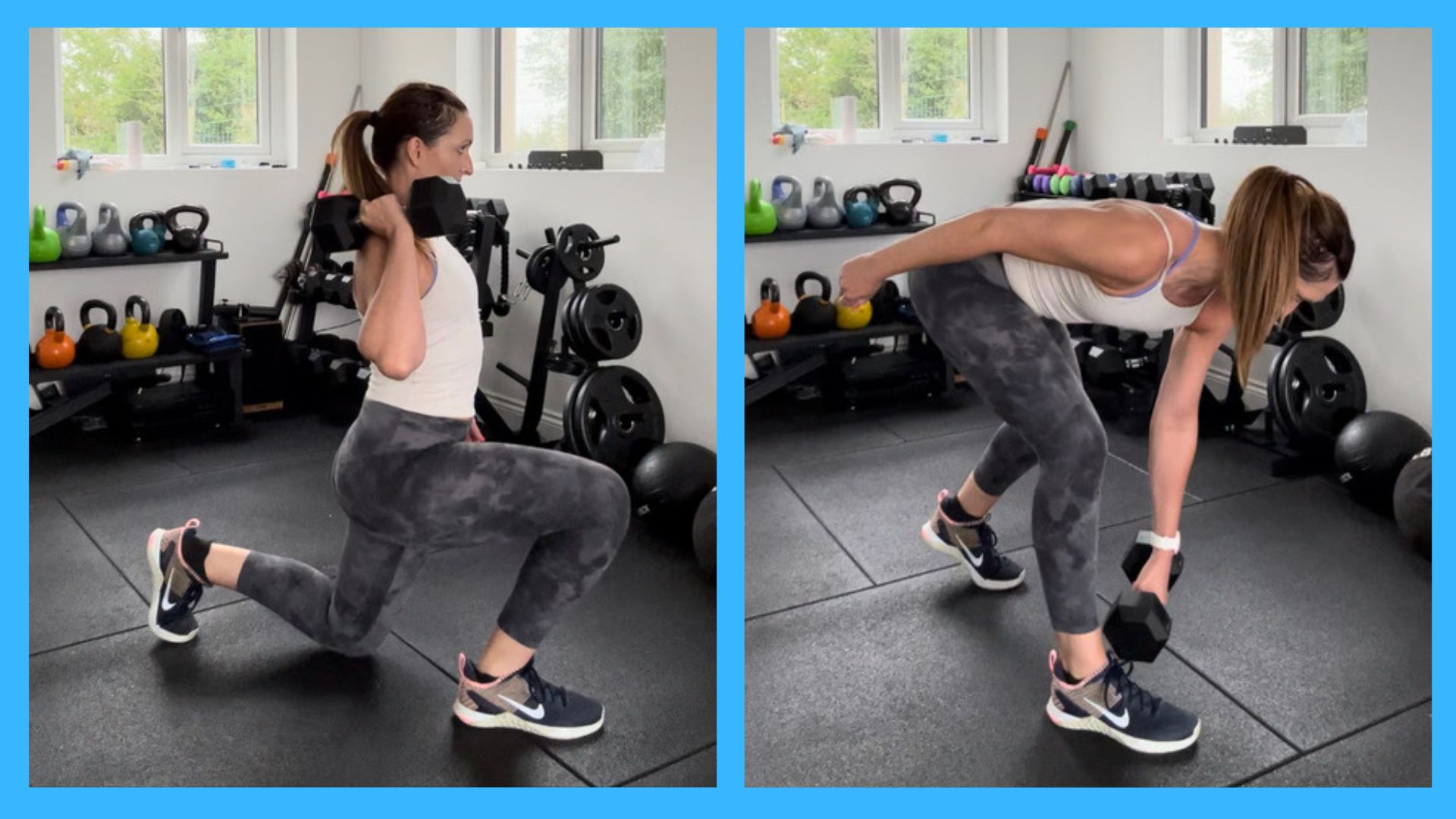
Even if you're short on time, space and equipment, you can still enjoy an effective strength workout at home. This five-move routine from Dr Kerry Aston, founder of The Movement Medic, only uses a couple of dumbbells, so it can easily be done from the comfort of your living room.
"This routine emphasises unilateral movements, targeting one limb at a time," Dr Aston tells Fit&Well. "This allows you to identify and address any unnoticed movement or muscle imbalances that often go uncorrected when performing bilateral [two-sided] exercises."
How to do the workout
For each exercise, perform three sets of six to eight repetitions on each side of your body, then rest for 60 seconds.
"Maintain a consistent tempo throughout, counting to two seconds on both the concentric and eccentric phases of the movement," says Dr Aston.
The terms "concentric" and "eccentric" refer to the upwards and downwards phases of an exercise. So, for the static split squats, you'll take two seconds to lower your knee to the floor, and another two seconds to return to the starting position. The emphasis is on controlling your movements.
"This deliberate pace enhances muscle engagement while minimising the use of momentum," Dr Aston explains.
"If there's a significant strength difference between the two sides of your body, begin with the weaker side then lift the same weight and complete the same number of reps on the stronger side."
Start your week with achievable workout ideas, health tips and wellbeing advice in your inbox.
1. Static split squat
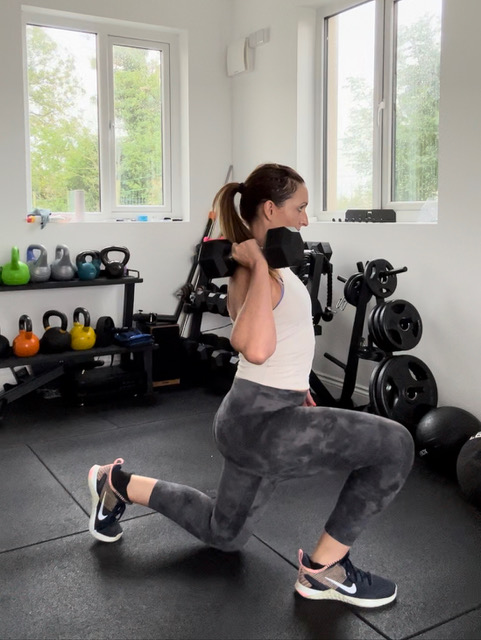
Sets: 3 Reps: 6-8
- Stand upright holding a dumbbell in each hand (or at shoulder height, as shown in the image above). Step one foot behind you, keeping your feet hip-width apart.
- Keeping your torso upright, bend your front knee and lower your body until your back knee gently touches the floor. If you struggle with balance, consider widening your stance slightly beyond hip-width for added stability.
Expert insight
"The static split squat resembles a lunge, but it focuses on the same movement pattern as a squat. It's an effective exercise for targeting your glutes and quads while also enhancing balance and coordination."
2. Single leg deadlift
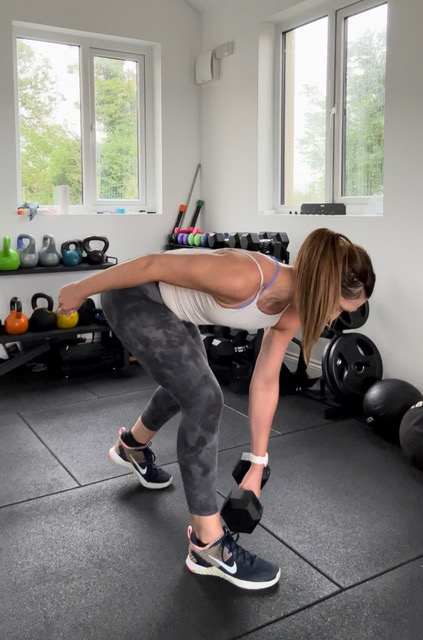
Sets: 3 Reps: 6-8
- Start in a staggered stance (as with the static split squat) with your right foot forward, your feet hip-width apart and a dumbbell in your left hand.
- Keeping your front knee slightly bent, lower the dumbbell towards your right foot, focusing on pushing your hips back as if aiming to touch a wall behind you, rather than simply sitting down.
- Lower the dumbbell as far as your hamstrings will allow, then drive through your right foot to to return to the starting position. Make sure you keep a neutral (straight) spine throughout this exercise). Switch sides and repeat.
Expert insight
"Unlike the split squat, this exercise emphasises a hinge movement rather than a squat, making it Ideal for working the hamstrings and posterior chain. A crossover reach—holding the dumbbell in your left hand then lowering it towards your right foot, and vice versa—can also help reduce strain on your back muscles."
3. Lateral step down
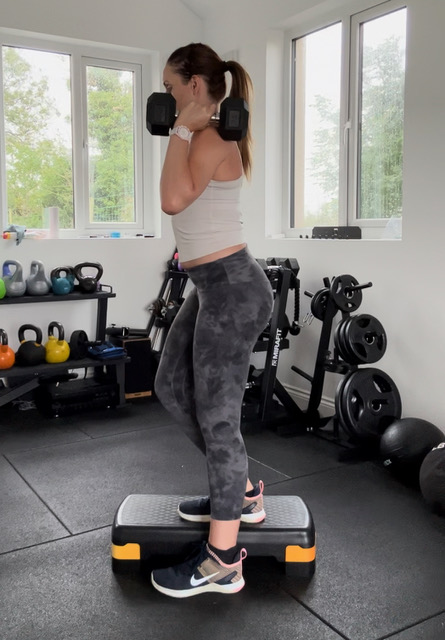
Sets: 3 Reps: 6-8
- Find a low step and stand so your right foot is on the step and your left foot is hovering over the edge. Hold a dumbbell in each hand, either by your side or at shoulder height as shown in the image above.
- Slowly bend your right knee to lower your left foot towards the floor. Touch the ground then, without fully resting on your left foot, return to the starting position. Switch sides and repeat.
Expert insight
"This exercise enhances balance, stability and strength," advises Dr Aston. "Aim for smooth controlled movements, descending straight down without letting your leg swing out."
4. Half-kneeling shoulder press
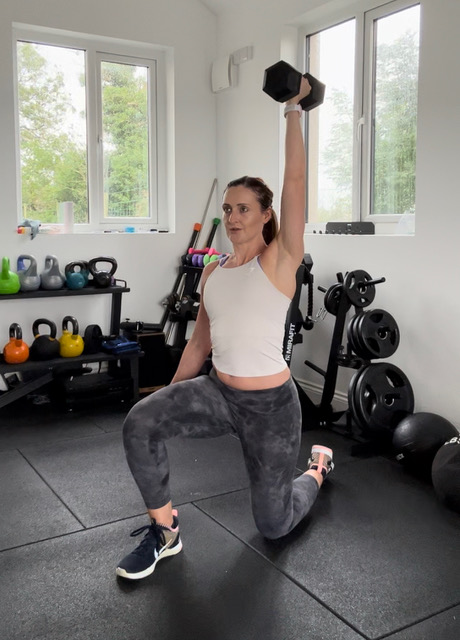
Sets: 3 Reps: 6-8
- Start in a half-kneeling position (as pictured above) with your right foot and left knee on the floor. Both knees should form a right angle.
- Holding a dumbbell at shoulder height in your left hand, press it in a straight line towards the ceiling, then control it back to the starting position. Avoid letting your ribcage flare, and maintain a forward gaze throughout. Switch sides and repeat.
Expert insight
"The half-kneeling position provides increased stability. It also challenges the hip flexors and offers a core workout to a moderate extent."
5. Bent-over row
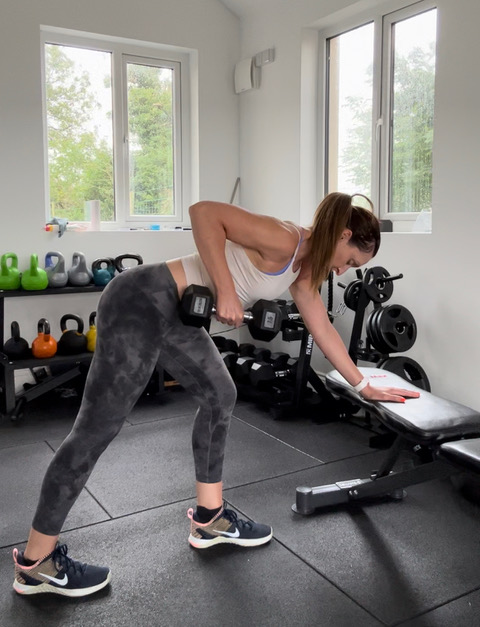
Reps: 3 Sets: 6-8
- Start in a staggered stance with your left foot forward and a dumbbell in your right hand. Hinge at the hips and place your left hand on a weight bench, chair or other sturdy surface at about knee-height for support.
- Keeping your back straight, pull the dumbbell towards the bottom of your rib cage, ensuring your elbow moves past your torso, like you’re starting a lawnmower.
Expert insight
"This exercise targets the latissimus dorsi back muscles or lats. These are the largest muscles in your upper body, playing a crucial role in stabilizing overhead movements and protecting your shoulders from injury."
Benefits of this workout
This workout is designed to build strength throughout your upper and lower body, while also ironing out any muscular imbalances.
Strength training routines like this one can help with weight loss. That's because they help you build muscle, when twinned with the right diet and adequate protein intake. Not only will this increase your resilience against injury, keep your joints healthy and make everyday tasks feel like a breeze, but it can also help with weight management as muscle is a metabolically active tissue. This means it takes energy for your body to build and maintain, boosting your metabolism and increasing your calorie burn at rest.
Have a look at our explainer piece on strength training exercises for weight loss, if you want more tips on this. Or read up on how to create a calorie deficit for weight loss.
Need some guidance on what weights to choose? Read through our guide to the best adjustable dumbbells

Harry Bullmore is a Fitness Writer for Fit&Well and its sister site Coach, covering accessible home workouts, strength training session, and yoga routines. He joined the team from Hearst, where he reviewed products for Men's Health, Women's Health, and Runner's World. He is passionate about the physical and mental benefits of exercise, and splits his time between weightlifting, CrossFit, and gymnastics, which he does to build strength, boost his wellbeing, and have fun.
Harry is a NCTJ-qualified journalist, and has written for Vice, Learning Disability Today, and The Argus, where he was a crime, politics, and sports reporter for several UK regional and national newspapers.